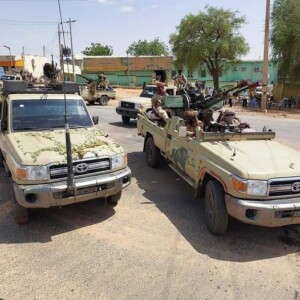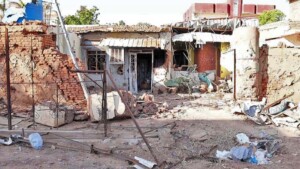North Darfur Zamzam camp sit-in lifted after most demands met
Leaders of the Zamzam camp for the displaced near El Fasher, capital of North Darfur, lifted their sit-in on Monday afternoon, following an agreement with the Darfur Regional Government on the implementation of their demands for more security in the area and better services in the camp.
 Displaced let their livestock drink in Zamzam camp, south of El Fasher, North Darfur, October 2012 (Albert González Farran / UNAMID)
Displaced let their livestock drink in Zamzam camp, south of El Fasher, North Darfur, October 2012 (Albert González Farran / UNAMID)
Leaders of the Zamzam camp for the displaced near El Fasher, capital of North Darfur, lifted their sit-in on Monday afternoon, following an agreement with the Darfur Regional Government on the implementation of their demands for more security in the area and better services in the camp.
The sit-in which lasted for 17 days also blocked the road linking El Fasher with the South Darfur capital of Nyala. The protesters unblocked the road on Monday, on the condition that the implementation of the agreement would not exceed one month.
Activist leaders of Zamzam, one of the largest camps for the displaced in Darfur decided on the protest because of the continuing attacks of gunmen on the displaced when they leave the camp, and the lack of basic services in the camp.
In a memorandum earlier submitted to the North Darfur government, they demanded the restoration of the Rule of Law and the arrest of the armed robbers in the area, the deployment of joint forces to protect the displaced and secure the agricultural season, the implementation of all provisions of the 2020 Juba Peace Agreement regarding displaced people and refugees, in addition to the improvement of basic services in the camp.
A North Darfur government delegation visited the sit-in last Friday, and described the demands as “legitimate”.
On Monday morning, a newly formed committee of the Darfur Regional Government (DRG) visited the sit-in where they signed an agreement with the protest leaders, members of the Zamzam sit-in committee told Radio Dabanga later that day.
The agreement “responds to most of our demands for security, justice, and development,” they said, and explained that the committee pledged to deploy sufficient forces to protect the camp and the agricultural season, and to upgrade the police post in the camp to a police station. In addition, joint committees with members from the North Darfur government, the DRG, and the Zamzam camp administration will be formed to review the services in the camp, especially concerning drinking water, health and education.
The DRG donated two ambulances to the camp, and will maintain three schools in the camp. In addition, the regional government offered the camp administration $20 million for the rehabilitation of health and education service, and to support women and youth projects in Zamzam.
Sheikh Harun Ali Hasan, father of one of the many people abducted from the camp last month, told Radio Dabanga that he was disappointed, as the issue of people reported missing was not addressed in the agreement.
Camp?
In 2016, Zamzam camp hosted more than 125,000 people. The current number of residents is unknown.
Two years later, the governor of North Darfur claimed that 152,797 displaced people in North Darfur had left the camps in the state to return to their places of origin. He said that 327,031 people remained in the camps.
The governor announced that the three large camps near El Fasher would be incorporated in the city as new neighbourhoods. In order “to remove the effects of war”, the Abu Shouk camp would become El Waha neighbourhood, El Salam camp was renamed El Shaati neighbourhood, and Zamzam camp would become Zamzam town.
The North Darfur authorities would will dig ten water wells and build ten water reservoirs, in addition to providing education, health, and security services in these districts and areas of voluntary return, according to the governor.











 and then
and then